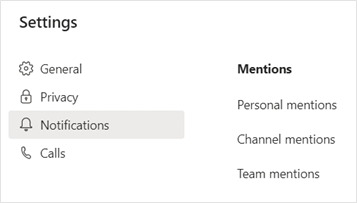Share your schedule and signal availability
Setting healthy boundaries, managing interruptions, and being clear about when you are available is an important part of managing your time when working from home.
- Set expectations for availability
Your daily schedule or even the hours that you work may change while working from home. Set expectations with your team (and those you live with) around your availability during the day.

- See what is important
With everybody working from home, you might see an increase in messages. Use the settings available in Teams and Outlook to customize notifications and prioritize conversations.

- Set boundaries
It can be a challenge to switch 'off' from work when you don't leave the office—or switch 'on' your workday when you don't leave the house. If needed, set clear intentions about work time and home time to avoid burnout or being 'always on'.

Take care and be mindful
In challenging circumstances, we need to remember to take a step back and focus on our health, wellness, and mindset.
- Don't forget to take breaks
It can be difficult to remember to take breaks. Use your calendar to turn meals and breaks into appointments so you get regular reminders. Block time on your calendar for exercise and fresh air—or just time to step away from your workspace.
- Work-life harmony
We recognize that while working from home you may need to occasionally redirect your time and energy to your loved ones. Continue to access available support options, caregiver benefits, and leave, as needed, to find the balance you need.
- Check-in with you (and others)
It’s important to check in with yourself and be mindful of how you are feeling. Anxiety, loneliness, and other feelings are perfectly normal, and we have resources to help you take care. Be sure to check in on others within your community.
Role of the manager
Managers play a key role in the success of their teams, especially during times of uncertainty and change.
- Lead by example
Model the work from home habits in this document. Be a positive example of the guidance, and make sure to reinforce inclusion. Check in with your employees, ask for perspectives, and identify any areas for improvement.
- Support in new ways
Help each person create their best and most productive work from home environment. Understand any business continuity concerns of your team and support their efforts at working in new ways. Be curious and ask questions that empower employees to find their own solutions.
- Frequent check-ins
These are unusual times with unanticipated challenges and may require more frequent check-ins. Students may be out of school. Be sure to manage expectations, offer support, and take time to understand the unique needs of every employee.